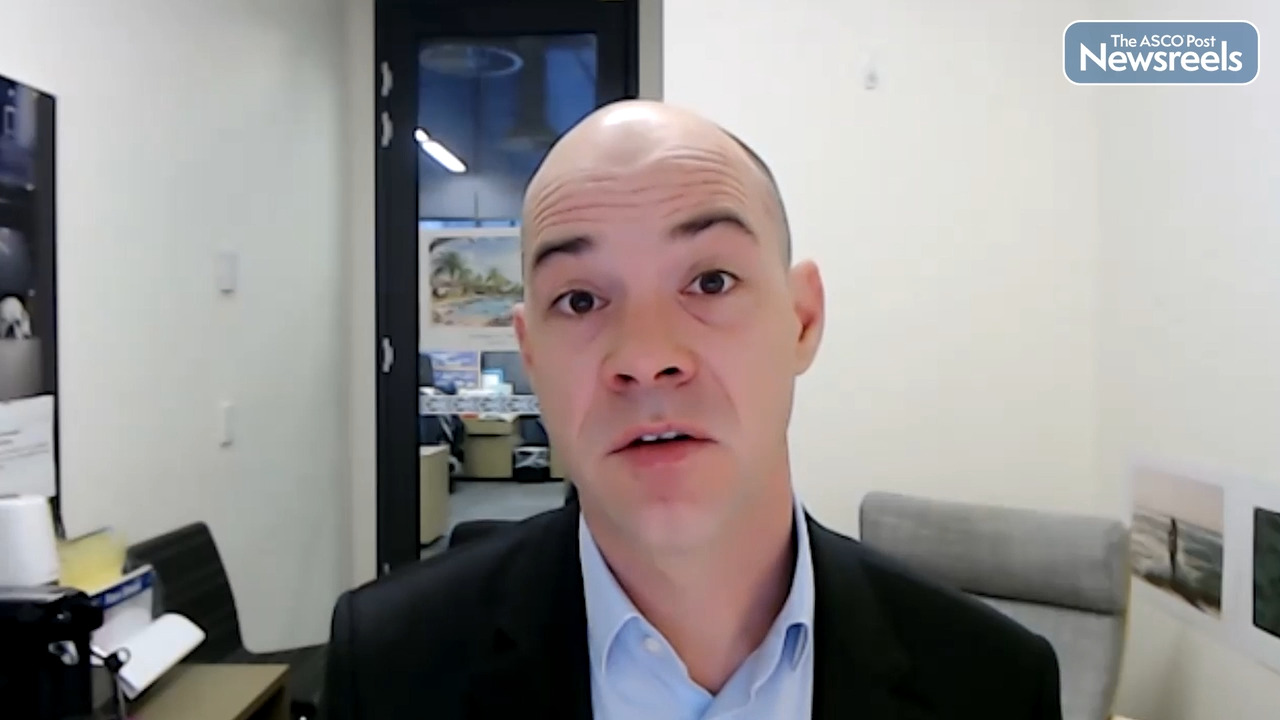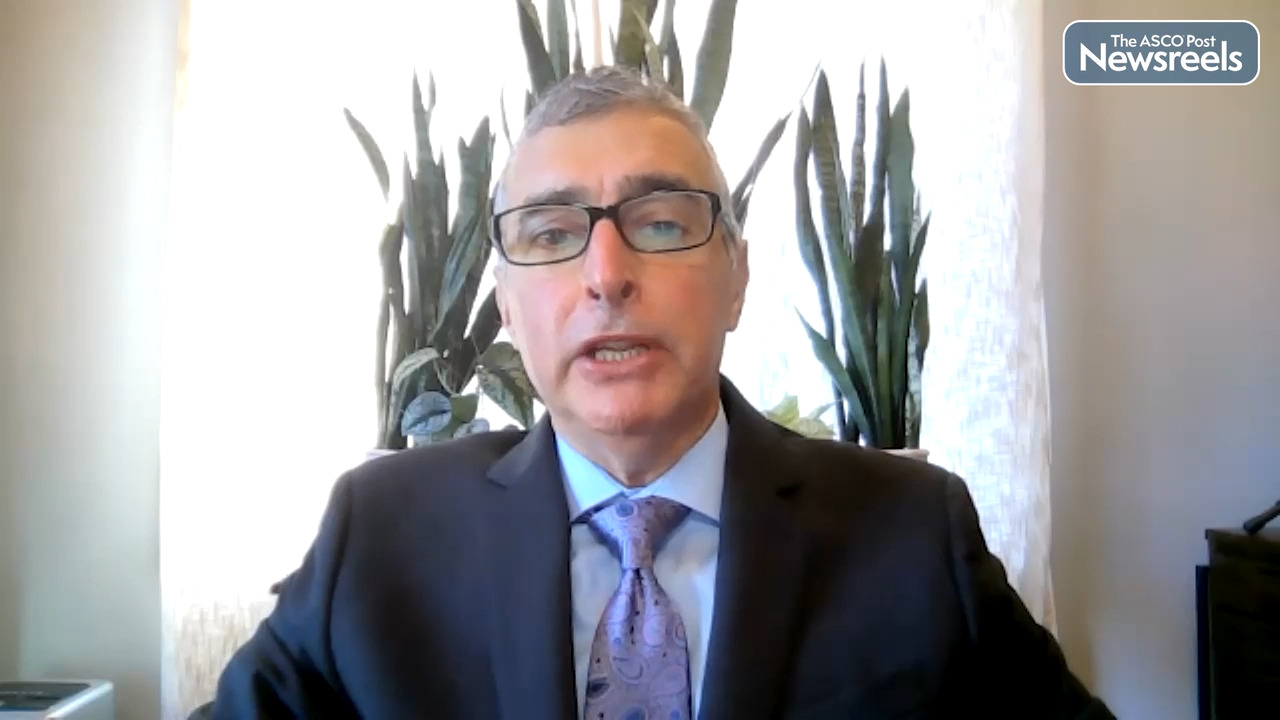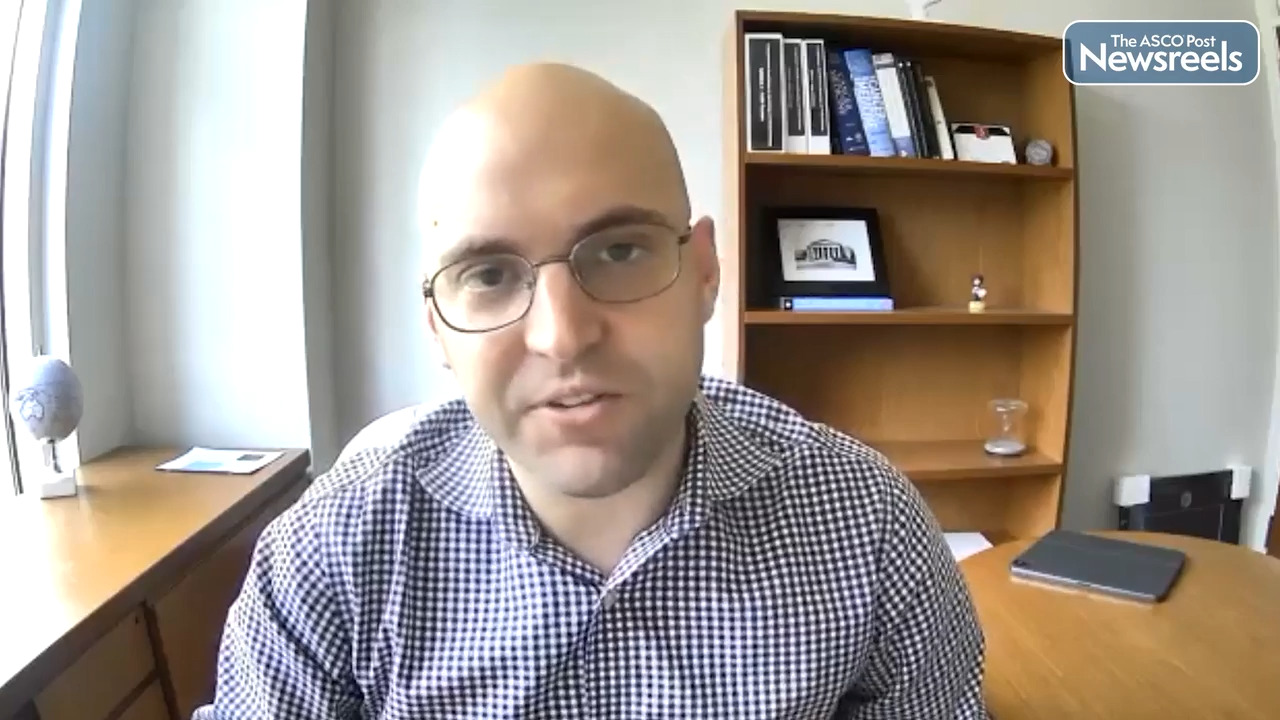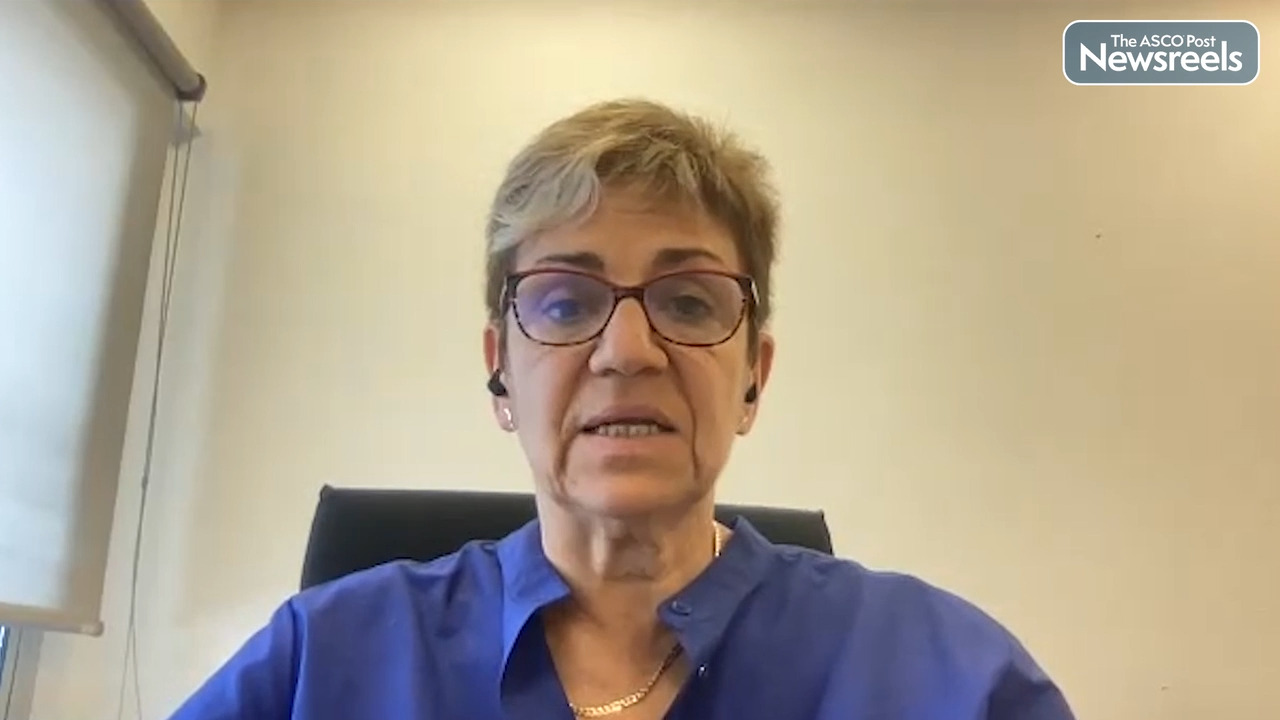Transcript
Disclaimer: This video transcript has not been proofread or edited and may contain errors.
This is a phase III trial evaluating frontline treatment in physically fit patients with advanced CLL. 926 were randomized in this study with a standard treatment arm containing chemoimmunotherapy with FCR, chemoimmunotherapy for patients up to the age of 65 years, or bendamustine-rituximab for patients above the age of 65 years.
And this was compared to two different co-primary endpoints. On the one hand, venetoclax combine obinutuzumab, and this co-primary endpoint has already been shown last year, and now at the EHA meeting, we're able to show the other second co-primary endpoint, progression-free survival for the comparison of the chemoimmunotherapy arm to a triple combination consisting of venetoclax, obinutuzumab, and ibrutinib.
This four-arm study included also fourth treatment arm, which was the combination of venetoclax plus rituximab.
So, overall, the chemoimmunotherapy lasts for six cycles of treatment. Venetoclax plus rituximab or obinutuzumab were given for 12 cycles; and with the triple combination, ibrutinib was also started on cycle one, and could be continued beyond the 12 cycles of venetoclax plus obinutuzumab until patients reached MRD negativity.
So, the majority of the patients stopped ibrutinib between cycle 12 and 15, due to reaching MRD negativity.
With respect to the patient characteristics, this was a patient population in patients with TP53 mutation were excluded by a central screening, because we used chemoimmunotherapy in one of the treatment arms. More than 50% of the patients had an unmutated IgVH status.
The results confirmed the prior MRD results, which showed a really high rate of undetected MRD rate with both combination agents containing venetoclax plus obinutuzumab. And now we do see a three-year progression-free survival rate, because we did an observation time of 38%. Of 90% was a triple combination venetoclax, obinutuzumab and ibrutinib, and 7% for the venetoclax-obinutuzumab combination, and 80% for rituximab-venetoclax.
The statistical comparison showed that a triple combination, as well as venetoclax-obinutuzumab with cistefecan, is superior to chemoimmunotherapy, while venetoclax plus rituximab was not superior.
With respect to the side effects, side effects were quite similar, and particularly most prominently were hematological side effects. And in addition to that, we observed that some typical ibrutinib or BTK inhibitor-associated side effects as hypertension, for example, were seen in the triple combination, but severe hypertension occurred only in 5% of the patients.
Severe infections, it is frequency of 4, were occurring in 20% of the patients receiving chemoimmunotherapy, and in a similar proportion in those patients receiving the triple combination venetoclax, obinutuzumab plus ibrutinib. With venetoclax-obinutuzumab, severe infectious complications were more rare, with 14%, and even lower with venetoclax plus rituximab.
So far, in the overall survival, we do not see any difference, and also no statistical significance. And therefore, the conclusion from this trial is that the data confirm the efficacy of venetoclax plus obinutuzumab. While we had limited data, and a fit patient population, that this regimen is truly superior, also, to chemoimmunotherapy with FCR. And the triple combination, which shows very interesting results, we are not being allowed to do a head-to-head comparison between the triplet and the doublet, of venetoclax, obinutuzumab, ibrutinib versus venetoclax-obinutuzumab alone. This will follow next year.
And until that, I will not recommend to use the triple combination because it was associated with more side effects, and we don't know yet, in a head-to-head comparison, what is the benefit for the addition of ibrutinib. So, if we look at subgroups, for example, patients with the unmutated IgVH [inaudible 00:04:51], maybe that these patients benefit more from the triplet.
Before the next questions, or the questions we have from the study group currently addressing in the CL17 study, is to compare the general treatment paradigms, CLL continuous treatment with the BTK inhibitor in the study of ibrutinib versus time-limited treatment with venetoclax-obinutuzumab, versus the venetoclax-ibrutinib combination, which [inaudible 00:05:22] also by the way, in the GLOW study, on the CAPTIVATE study. And this trial is still currently recruiting. We'll finish recruiting by autumn 2022.




